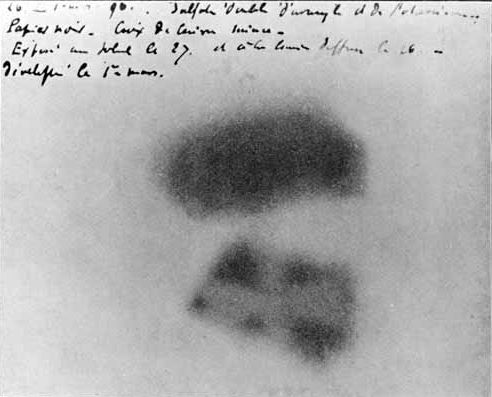Becquerel discovers radioactivity

The first evidence for radioactivity – images formed by Becquerel’s uranium salts (Image: Wikimedia Commons)
French physicist Henri Becquerel discovered radioactivity while working on a series of experiments on phosphorescent materials. On 26 February 1896, he placed uranium salts on top of a photographic plate wrapped in black paper. The salts caused a blackening of the plate despite the paper in between. Becquerel concluded that invisible radiation that could pass through paper was causing the plate to react as if exposed to light.
Marie Curie decided to study the new radiation using the sensitive electrometer invented by her husband, Pierre, to measure the conductivity of air that the radiation induced.
The discovery of radioactivity cultivated great research interest in Germany and the UK about the origin of the spontaneous electrical discharge observed earlier in the air. The simplest hypothesis was that the discharge was caused by the radioactive materials on Earth, though this was difficult to prove.
Researching natural radioactivity eventually lead to the discovery of cosmic rays.